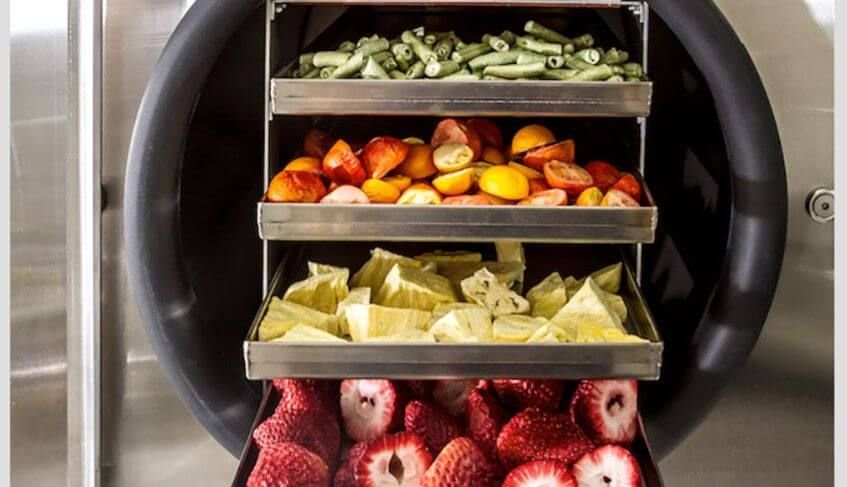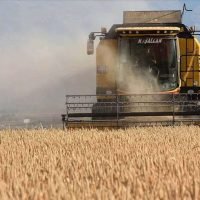Cold chain is the name given to all processes, such as freezing and cold transportation, from the production to distribution of foods that need to be kept under a specific temperature. Temperature is the most important criterion in order not to spoil the chemical structure of foods. If sudden changes occur in the temperature parameter, fares start to produce microorganisms and become harmful. Therefore, the cold chain is the cornerstone of healthy eating.
Today, the cold chain is the key point for “safe food” consumption. This method is applied for frozen products such as meat, fish and chicken, as well as for fruits, vegetables and legumes. In a way, the protection process starts in the field and continues without breaking during the preparation, storage and supply stages. As a result, foods are safely placed on the market shelves, and the elements that threaten health are eliminated.
It can be said that the freeze-drying technique has an important place in the continuation of the cold chain without breaking. Foods preserved with this technique are consumed without the risk of bacteria breeding. If you want to have detailed information about cold chain and freeze drying, you can continue reading the article.
Things to Know About Food Safety
foods; When it deteriorates biologically, microbiologically and chemically, it creates a serious danger to human health. In general, you can easily understand whether the food you consume at home is spoiled or not by its smell or taste. But there are also possibilities to the contrary. For example, a chicken that has not been cold enough will not have serious changes in taste. In addition, the sauce and seasoning of the food consumed in the restaurant can also create an obstacle to understanding the safety of the food.
It is essential for each individual to have information about food safety and to shop with consumer awareness. You can be sure that every food delivered to the consumer is healthy without breaking the cold chain. At the same time, hygiene rules and preservation procedures on market shelves are among the important points you should pay attention to.
Why Are Foods Preserved by Freezing?
It is essential to preserve foods without falling below certain temperatures. Well, what happens if the temperature balance is not achieved? The temperature range of 7.2 degrees to 60 degrees allows bacteria to survive and reproduce. When the temperature rises to 15 degrees and above, bacteria multiply very quickly and produce toxins.
A toxin is simply a biological poison. It is produced in foods by bacteria, viruses, fungi and protozoa microorganisms. Toxins can cause serious health problems by causing food poisoning.
It should be emphasized that the above-mentioned temperature values are not only valid for animal foods such as meat, milk and chicken. Plants, fruits, and vegetables can also become extremely harmful at temperatures conducive to bacterial growth. For example, frozen fruit is a healthy food. But a fruit that waits above 40 degrees can put your health at risk.
Relationship Between Frozen Food and Cold Chain
The cold chain is a process that includes the arrival of frozen foods on the market shelves. It is extremely important that the foods offered for sale in the markets that need to be protected by the cold chain are properly preserved. The relationship between frozen foods and the cold chain must be established correctly. For example, frozen dough, pizza or seafood should be stored at -22 degrees in a damp environment.
Cold Chain and Legal Obligations
The cold chain has been made mandatory as every person has the right to consume safe food. This situation has prepared the environment for the very strict performance of the inspections. Foods that are required to carry cold chain are as follows:
- Beverages
- Preserves
- Dry foods
- Auxiliary additives
- Snacks
- Chocolate and chocolate-covered foods
- Margarine
- Frozen dough
- Delicatessen
- Vegetables
- White meat
- Milk and milk products
- Sea products
- Frozen pizza
Foods listed above; It is handled in 4 different categories as dry, frosty, cool and cold. Temperature values have been determined for the relevant groups within the scope of legal regulations. For example, the mandatory temperature value for snacks in the dry product category is 21 degrees. While this temperature is 4 degrees in cold products, it is determined as -22 degrees in frozen products.
The cold chain can be realised by changing the determined temperature values by +2 or -2. However, it is a crime if there is a greater difference in temperature value and food is offered for sale. Many foods bought from the market today do not produce bacteria since the controls are carried out very strictly.
Retail Industry and Cold Chain
The cold chain has an important place in the retail process, from the acceptance of the products to the moment they are sold. Food transported to retailers must be kept at legally determined temperature values. When they come to storage areas and sales points, the food must be preserved in an environment with the same temperature value.
Cold chain cargo helps products to take their place on the shelves without spoiling. Here, as a consumer, one of the points you should pay attention to is to look at the temperature measurements of the market cabinets. For example, cabinets that hold frozen food have a yellow line. Products should not go above this line.
If you see an order crossing the line, you can easily understand that the relevant market does not sell safe products. In addition to all these, you should know that as a consumer, you have the right to complain if you realise that the necessary care is not taken in the retail sector.
Precautions to be Taken to Protect the Cold Chain
Extreme attention should be paid to the refrigerants used first to maintain the cold chain. The temperature values determined for healthy preservation are the specific numbers required for the products not to deteriorate and cannot be changed arbitrarily. At this point, reliable machines such as freeze-dry devices can be preferred.
“How many degrees is the cold chain?” Consumers frequently ask this question. To protect the chain, a maximum of 2 degrees difference may occur in temperature values. Falls or rises above this cause food spoilage.
What is Cold Chain Deterioration?
Cold chain disruption is keeping any food, such as vegetables, meat or fish, at a temperature value that should not be in one of the preparation, transportation and distribution processes. The cold chain is broken as soon as the temperature changes, and a suitable environment for bacteria production is prepared.
Consequences of Cold Chain Deterioration for Freeze-Dry Foods
Freeze Dry machines prevent cold chain deterioration in a highly comfortable way. This technique, also known as “freeze drying”, provides the safe preservation of many foods such as vegetables, fruits, meat and fish.
Freeze-dry machines reduce the moisture content of foods to certain amounts. This way, even though foods encounter wrong temperature values, they cannot produce bacteria because the humidity rate is balanced. Therefore, highly healthy foods are obtained, and thus the factors that will put your health at risk are completely eliminated.
You can reach our previous article from https://liyolife.com/en/is-frozen-fruit-healthy/






